Traditional Festivities in Slavonia - Unmissable Events
7th of April 2022 - There are a lot of festivities you can visit in Slavonia - from beer and food festivals that became really popular in recent years, to modernized cultural manifestations which teach us something new. However, traditional festivities in Slavonia which are held for more than half a century, are still an irreplaceable staple of this region.
When reviewing the list of festivities in Croatia, a tourist or even a Croatian citizen, is shocked by the variety and content Croatia organizes every year for their visitors. Urban, cultural, and gourmand festivals are in forefront of most tours and offers, especially with summer coming soon and since Croatia became a really popular destination among tourists, they also got more interested in the tradition and cultural heritage of the region they visit. For instance, Dubrovnik, which is a jewel of the Adriatic coast, not only attracts visitors with its gourmand offers or beautiful historic sites like Tvrđava, they also have the Dubrovnik Summer Festival (Dubrovačke ljetne igre) which brings visitors closer to tradition and the way native people of Dubrovnik lived centuries ago. This event brings Dubrovnik back to the golden age of renaissance and baroque, the living spirit of drama and music, and many more, which were bestowed upon Croatian cultural and scholarly history. That’s why Dubrovnik is so good at tourist offers, they bring everything to everyone.
However, with different tourists comes different tastes and recent years showed an increase in interest in Eastern Croatia, more precisely, Slavonia and Baranja, which are labeled as more “rural, folk” regions. Slavonians and Baranians recognized the potential these regions have and started adapting to tourists' wishes and needs. Yes, they devised and organized multiple new festivals that will be held for many years to come but they realized their traditional festivals, which are really popular with lovers of everything related to tradition and locals, need more exposure.
Đakovački vezovi - Đakovo
Today, Đakovački vezovi is a well-known and affirmed manifestation of original folklore. The first manifestation occurred in July 1967, as part of then the International Year of Tourism and from the beginning, the event was a great success with people from Slavonia and beyond. The main event kept its original date and it’s held every year in July. Contents of the festival include original folklore from Slavonia, Baranja, Western Srijem, and other parts of Croatia with accompanying events such as the opening of various exhibitions, equestrian events, and other cultural and tourist events. The entire city participates in the event and in 2005, it received the International Tourism Charter (European Federation of Tourist Journalists based in Rome) Merits for Tourism. Thousands of folk costumes pulled from the chest of oblivion, thousands of participants from Slavonia, Baranja, the whole of Croatia, even Europe, and the world, bring us songs, dances, and customs of their homeland for decades in Đakovo. If you’re a gourmet, you’re settled. Hundreds of different dishes are served and ready for degustation. Wine lover? Multiple winemakers with their best wines are ready to show off their products which are a reflection of the beautiful, rich region of Slavonia. Artists, folk, history lovers, and even animal lovers can come and have the time of their lives which makes it one of the largest and most popular traditional festivities in Slavonia. For more details, check out their official website.
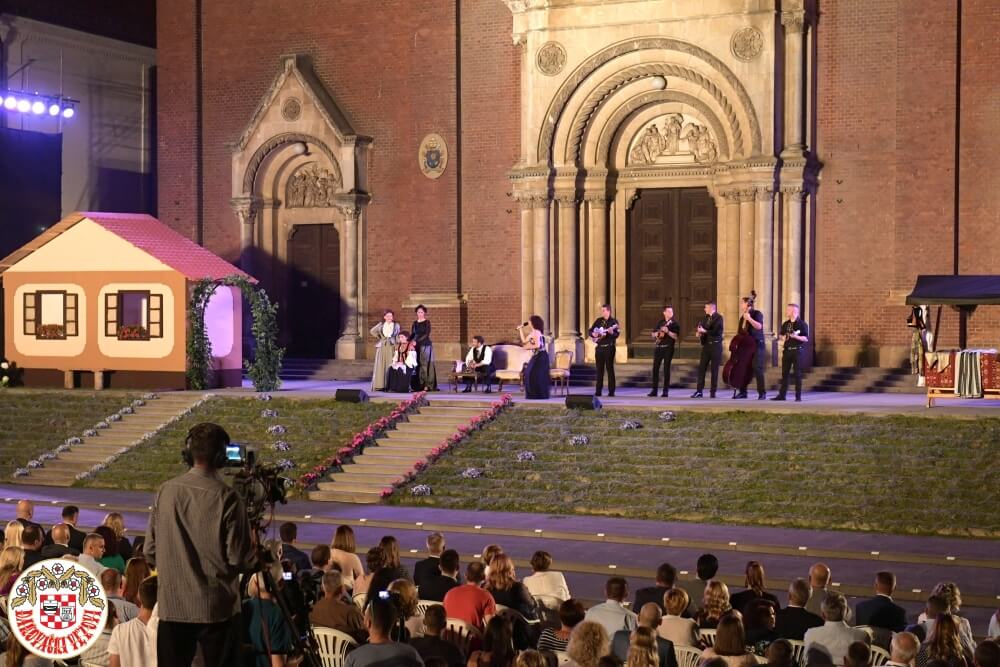
The opening of "Đakovački vezovi" in 2019 (photo credit: Photo Gallery - djakovacki-vezovi.hr)
Vinkovačke jeseni (Vinkovci Autumns) - Vinkovci
Definitely, the largest cultural event in the region, arguably in Croatia and some would say, in this part of Europe. The First Vinkovačke jeseni was organized in September 1966 and soon became one of the most famous festivals of its kind in all of Croatia. The foreground of the manifestation is the care of traditional folk dances, costumes, and customs in order to preserve various values of folk and traditional life of Slavonia. What’s really interesting is the fact that the manifestation is organized in September because of autumn - a season that rewards Slavonians for their hard work. After its founding, the festival soon began to connect all lovers of cultural heritage, not just Slavonia, but all the regions in Croatia. So every year hundreds of Folklore Societies from Croatia, Serbia, Bosnia and Herzegovina, Slovenia, and many more come to Vinkovci to display their culture to visitors. However, they didn’t stop there. Organizers recognized the tourist potential of their event and upgraded it for modern times, so apart from the main event which signifies a closure of Vinkovačke jeseni, the whole week before the opening is dedicated to its visitors! For instance, the opening of the event comes with a big performance by the local theatre with other guests from all over Croatia and in the evening the concerts of the biggest Croatian music stars begin, every evening of the week! Personally, I watched biggest Croatian performers on Vinkovačke jeseni stage like Dino Dvornik, Severina, Jelena Rozga, Klapa Intrade, Giuliano, Prljavo Kazalište and so many more. It truly is for everyone. Then, when the show of the manifestation ends on the last day of the week with the biggest folklore parade in this part of Europe (nationally televised), with the most popular folk and traditional commentator in Croatia, Branko Uvodić, every visitor feels enriched with Slavonian tradition, cultural heritage, food, art, folklore and more. That’s why Vinkovačke jeseni is one of the biggest traditional festivities in Slavonia and one of the best representatives of Croatian traditional, cultural heritage in this part of Europe. For more details, visit their official page. If you want to read more about Vinkovci, check this TCN article.
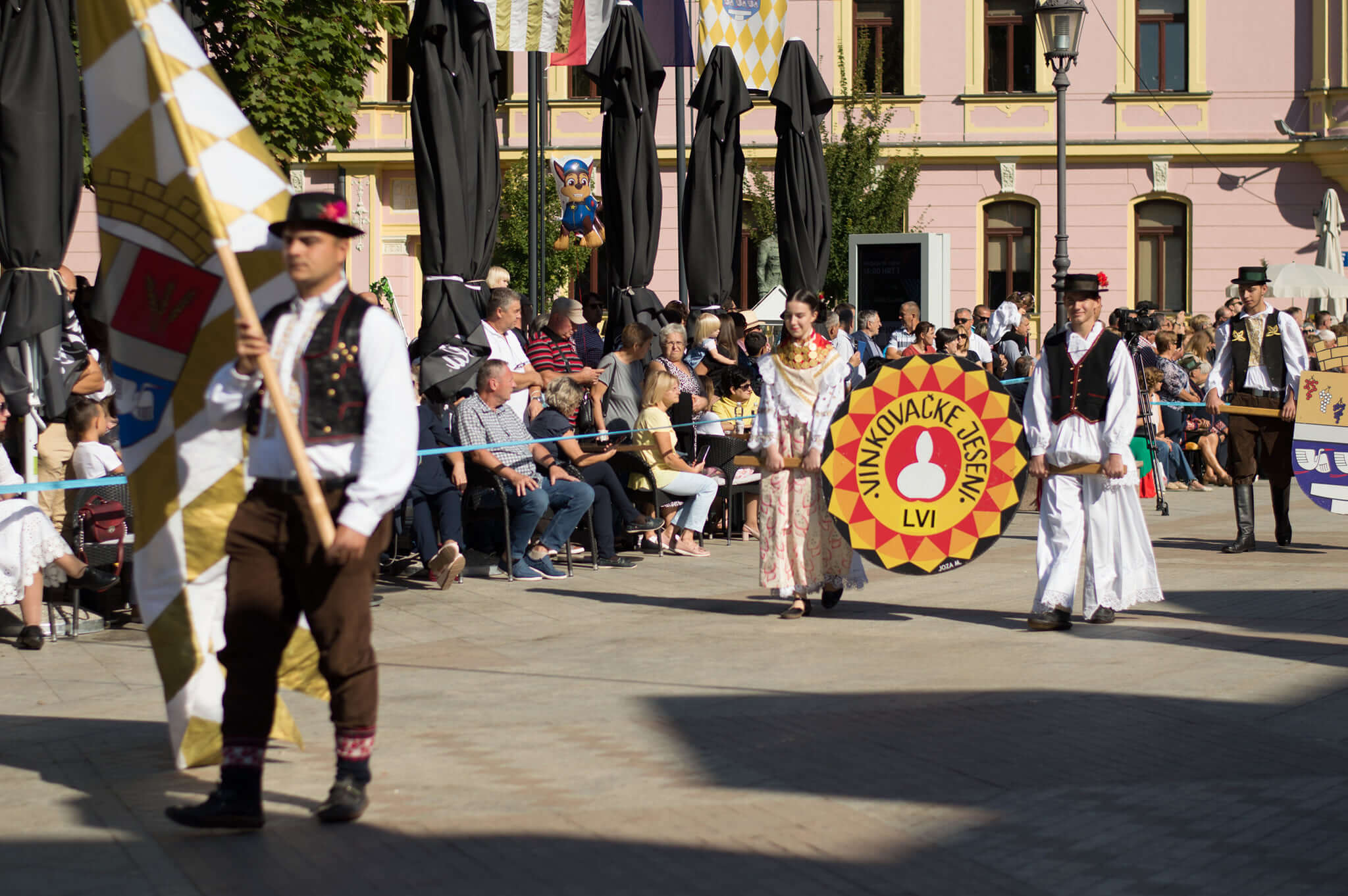
"Vinkovačke jeseni" parade - the main event on the last day (photo credit: Vinkovačke Jeseni - Facebook page)
Aurea Fest - Zlatne žice Slavonije (Golden Wires of Slavonia) - Požega
In the middle of Slavonia lies the city of Požega, located in the hilly parts of the region where none of the roads are straight - a place where hills are dotted with roads. Surrounded by the old hills of Psunj, Papuk, Krndija, Dilj, and Požeška Gora and home of the famous Croatian poet, Dobriša Cesarić, it doesn’t seem odd that this city is the home of one of the biggest traditional, cultural and musical events of folklore, tamburitza but also pop music, which has been held in Požega since 1969, with a break between 1981 and 1990. Zlatne žice Slavonije today is a four-day event with more than 40,000 visitors and more than 100 accredited journalists from several countries. Songs, top-tier wines, gastronomy events, concerts, exhibitions, art colonies, sports competitions, folklore festivals and other events are slowly making Požega and the Golden Valley one of the tourist destinations in Croatia in September. It hosted multiple Croatian musicians (mostly “tamburaši”) like Gazde, Zlatni Dukati, Miroslav Škoro, Slavonske lole and so many more. CDs and cassettes were pretty popular back in the day, which meant that almost every Slavonian household had a copy of musical repertoire from Golden Wires of Slavonia! So, if you visit Slavonia, definitely visit Požega in September - great content, songs, dances, food, and most importantly, people. The main event, the concert, is nationally televised on HRT every year. For more information, visit their official page.
For now, we’re stopping here. There are a lot of traditional festivities in Slavonia but these three events are staples of traditional festivities in Slavonia and the whole of Croatia. From entertainment to food and sports recreation, these manifestations are unmissable events if you want to visit Slavonia. Slavonian spirit cannot be recreated anywhere else, so if you want to relax further after a summer tour of the Adriatic, come to Slavonia, they’re going to welcome you with open arms.
For more, make sure to check out our travel section.
City of Osijek to Apply for Projects Worth HRK 440 million
April 6, 2022 – Most of the projects that are being implemented in the city of Osijek are financed with extra-budgetary European and national money.
As Lokalni.hr writes, Osijek has become a large construction site. There is no part of the city without cranes and machines everywhere. At the moment, projects worth a billion kuna are being implemented. Most of them are financed by extra-budgetary money, both European and national.
An underpass is being built on Čepinska, which will solve traffic problems that are more than half a decade old. Reconstruction is underway at the Copacabana beach, which will provide Osijek with its first real Olympic swimming pool. The tram line is also being reconstructed, which is a prerequisite for the introduction of low-floor trams. The baroque core of the Fortress is being restored. The most modern wastewater treatment plant is being built in Nemetin. The City of Osijek has donated land to the Osijek-Baranja County in the Nemetin Economic Zone which will serve for the construction of the regional distribution centre for fruit and vegetables. The construction of the Economic Centre is also underway, with the most modern fair space for Osijek.
“The city of Osijek has taken big steps forward. There are many projects. We have listed only the largest. But we don't mean to stop there. We are ready to apply for projects worth HRK 440 million with the National Recovery and Resilience Plan. The documentation has been prepared. We paid special attention to the construction of new kindergartens, as well as the extension of the existing ones and the expansion of schools”, says the mayor of Osijek, Ivan Radić.
One of the projects planned for application with the National Recovery and Resilience Plan is the already mentioned reconstruction of the Copacabana beach, for which the city budgeted 34,743,875 kuna in 2022. The list of the projects further contains arrangements of the Cultural Centre with a budget of HRK 7,884,209, as well as the reconstruction of Trpimirova Street from Vukovarska to the Drava River with roundabouts and pedestrian/bicycle underpasses – the preparation of the project documentation.
Another important project is the construction of road, bicycle, and pedestrian infrastructure in the function of developing public transport and promoting zero-emission transport to improve flow, eliminate bottlenecks and increase traffic safety in the City of Osijek, worth 35 million kuna. It integrates three transport infrastructure construction projects. One of them is the construction of an intra-zone street in Jug 2 in Osijek with traffic areas, mixed sewerage, and public lighting from Opatijska to Medulinska street. Another is the reconstruction of a pedestrian (and bicycle) bridge over the Drava river in Osijek, while the third is the reconstruction of Bizovačka and Osječka streets in Josipovac.
For more, check out our politics section.
French Institute in Croatia Celebrating Francophonie
7 March 2022 - The French Institute in Croatia will this year again organise a number of live and online events, to be held from 7 March to 3 April, to celebrate Francophonie.
The events will include exhibitions, book presentations, educational workshops on theatre, film screenings, round table debates on literature as well as a national competition in translation for high school and university students.
As part of the French EU presidency, the French Institute in Croatia and its Belgian, German, Slovenian, Italian and Portuguese partners will launch in mid-March a major national multilingual poetry contest intended for all young Croats aged 6 to 23.
On March 20, the International Day of Francophonie, French-speaking ambassadors and members of the diplomatic corps in Croatia will speak on Facebook about their dedication to French and its role in their personal and professional life.
A detailed Programme of the 2022 Rendez-vous de la Francophonie is available at https://institutfrancais.hr/frankofonija/.
Glassblowing School Inaugurated in Istria
ZAGREB, 22 Feb 2022 - The Zlatni Vitraj Artistic Glassblowing School was inaugurated in Stranići near Poreč, Istria County on Tuesday as the first of 22 events planned in Croatia to mark the UN International Year Of Glass 2022.
These are moments when the strength of a community, as well as of an individual, is felt, Culture Minister Nina Obuljen Koržinek said at the ceremony, thanking the Association for the Promotion of Traditional Arts, which founded the school, for including this project in the UN International Year Of Glass and thus helping Croatia to find an important place on that world map.
"It's a privilege when we have such enthusiasm and when there are people who make their life project so valuable that it will eventually contribute to the community, and we are here to support it. Croatia is one of the states with a truly representative antique glass museum in Zadar, whereby we testify to the continuity of artisanship as well as art in glass through the centuries," the minister said.
She added that the process of protecting glassblowing crafts in the Zagreb area as an intangible cultural heritage was under way.
The Zlatni Vitraj Artistic Glassblowing School was founded to rescue artistic glassblowing from extinction, said Josip Deutsch of the Glass & Art Association for the Promotion of Traditional Arts.
"With this event we celebrate the past, present and future of glass as a very transformative material," he added.
Touring Exhibition About Refugees in Aftermath of WW2 Arrives in Zagreb
ZAGREB, 1 Feb 2022 - The travelling exhibition called "Memory of Nations" about 12 people who survived the periods of large-scale displacements and changes of borders in the wake of the Second World War was staged in Zagreb on Tuesday.
The multilingual and multimedia exhibition, staged on a truck, is staying near the Trg Francuske Republike Square until 21 February. After Zagreb, the next stops are Dresden, Wrocław and Prague. It was already staged in Bratislava.
The exhibition, prepared as part of a project called "Inconvenient Mobility" by associations from Croatia, the Czech Republic, Germany, Poland and Slovakia, brings stories and experiences of individuals who migrated after the Second World War due to changes of borders, political decisions, and the war and post-war legacy.
The Croatian NGO included in this project is Documenta, which has done five interviews with witnesses who speak about the migrations of local Italians in Istria, Kvarner and Dalmatia.
The other stories in the exhibition are about displaced persons from Germany, Slovakia, Czechia, Hungary, Poland and Ukraine, said Documenta leader Vesna Teršelič today in Zagreb.
Split County Supporting Several Cultural Heritage Preservation Projects
ZAGREB, 24 Jan 2022 - Culture Minister Nina Obuljen Koržinek on Monday held talks with Split-Dalmatia County Prefect Blaženko Boban on cultural projects that the county has prepared for the next multiannual period including the construction of a museum within the fortress on the island of Vis.
Addressing the press after the meeting, which was held in Split, Minister Obuljen Koržinek underscored the construction of a new museum in the fortress on Vis Island, the Salona archaeological site, the Archaeological Museum in Split with its focus being on Salona - and the further exploration and presentation of that ancient locality.
We also discussed the ancient Stećak tombstones and I would like to mention something we discussed ten days ago in cooperation with the Ministry of Agriculture and a new project to finance agriculture on archaeological and protected historical sites, she said.
Split-Dalmatia County has three sites listed on the UNESCO list, the minister said. She added that it is the only county that have as many as three conservation departments, which bears witness to the intensity and wealth of its cultural heritage.
The ministry is aware that no matter how much is invested in preserving this rich heritage, that will not be sufficient. Hence it is necessary to identify priorities and in that regard to further invest in cultural heritage because of its value, the importance for the community and huge potential to attract tourists, the minister said.
Culture Ministry Allocates €533k for Visual Arts and €252k for Translations
ZAGREB, 22 Jan 2022 - The Ministry of Culture and Media has granted support for the promotion of visual arts in the total amount of HRK 4.035 million (€533,000).
A total of 338 applications were submitted to the call for financing public needs in culture in 2022 for the scheme of financial support and 214 of them have been selected.
The ministry also approved HRK 1.89 million (€252,000) scheme for literary creative processes, including translations of great works into Croatian. As many as 72 projects will be funded under this scheme.
(€1 = HRK 7.5)
For more, check out our dedicated politics section.
AEPO-ARTIS: Croatia Making Position of Performing Artists Difficult
ZAGREB, 3 Aug, 2021 - AEPO-ARTIS, a non-profit organisation that represents over 650 performing artists, has sent a letter to the Croatian culture minister criticising Croatia for being late with the adoption of new copyright legislation and missing a deadline for the implementation of two EU directives, the Croatian Musicians Union said on Tuesday.
The organisation said that the implementation of the Copyright Directive and the Directive on online transmissions and retransmissions was being delayed because Croatia was late with the adoption of the new Copyright and Related Rights Act.
The letter, signed by AEPO-ARTIS secretary general Ioan Kaes, says that the COVID-19 pandemic has widened the gap between the growth of profit by online giants and individual artists because the latter do not participate in the fair distribution of this turnover.
The situation is particularly dramatic because in the new business circumstances the turnover of online platforms has become a dominant source of income for the music industry. For over a year and a half, performing artists have been denied their basic source of income - live performances, while at the same time the use and turnover of their recordings increased and performers could not enjoy their rights equally with others. Although their works still reach wide online audiences, artists receive small or no remuneration for them, according to the letter.
The institute of performers' inalienable right to remuneration is not incorporated into the proposal for the new Copyright and Related Rights Act, and under the proposal, record companies would be given an additional three years to adjust their business. This would allow Croatian record companies to continue their unfair and unethical practice of blackmailing performing artists and not paying them for the performances that have been used by online services for years, the letter said.
AEPO-ARTIS concluded by saying that introducing the inalienable right to remuneration, which artists would be able to exercise through their collective management organisations, is the best, if not the only, solution that guarantees that artists receive appropriate and proportionate remuneration for their work.
For more about politics in Croatia, follow TCN's dedicated page.
Total Croatia in Ukrainian: Word of Support by Former Ukrainian Diplomat and Writer Jurij Lisenko
July 12, 2021 - As the Total Croatia site offers translations on all things Croatian in various languages, former diplomat and a famous Ukrainian writer Jurij Lisenko gave his opinion on the Ukrainian translations of the articles. Check out the video, acquired by Ivor Kruljac and edited by Jose Alfonso Cussianovich.
The tourist season is underway, and the goal is to get tourists from all over the world while providing safety in challenging times of corona – both for locals and visitors. As TCN reported, despite the tourist season in 2021 already being 58% better than that of 2020, it also seems that even with predicted Croatian tourism growth for this year, 2019 levels are very far.
With these predictions, Croatian tourists boards should do as much as possible in informing and promoting Croatia to have the best possible outcome. But given that doesn't always work out for the best, TCN is here to help.
Total Croatia: TCN's Multilingual brother
Well, more precisely, not TCN but rather TC or Total Croatia, if you will, the sister site that explains Croatia in detail. TC offers you in-depth articles to explain Croatia from head to toe: What you need to know about Croatia, how to come and travel around the country, detailed views on Croatian destinations, and info on everything you can see and do during your stay.
In addition, articles are translated to various European and world languages!
Word of support from an established Ukrainian writer
One of these languages is Ukrainian and in an effort to see how we did, we reached out to a Ukrainian writer Jurij Lisenko.
„Regarding the text itself, it is really well written. It contains very significant specific business information on various aspects, such as finding apartments or finding jobs for foreigners. At the same time, it is written lively, objective, bit ironic, but with great love for Croatia“, said Lisenko commenting on the Ukrainian translation for the article „Living In Croatia“.
Check out the video to see his verdict for yourselves.
Jurij Lisenko sends a special greeting to Total Croatia News and Total Croatia from Ukraine.
Famous Ukrainian writer helping Croatian writers
In a pool of quality Ukrainian writers, Jurij Lisenko is particularly interesting, not just for his excellent writing, but also as he was a former diplomatic advisor at Ukrainian Embassy in Zagreb.
As Akademija Art wrote, Jurij Lisenko was born on May 9, 1958 in Kyiv. Educated in Slavic languages, he lectured the Ukrainian language as well Serbian-Croatian in the Journalist faculty in Kyiv from 1980 to 1997. He also published over 20 scientific papers on philology and is a known poet publishing under the name of Jurko Pozajak. In 1998 he moved to diplomacy and worked for the Ukrainian Embassy in two terms (1998-2002 and 2013-2017), and also in Embassy in Belgrade, Serbia, from 2004 to 2008. He was also a speechwriter for Ukrainian president Viktor Juščenko and continued to work for Ukrainian's Ministry of Foreign Affairs since 2017.
Lisenko captured the attention of the Croatian public when along with his daughter Daria, he made new Croatian words, and the two co-authored a book of poetry for kids „Ide Svašta!“ (Everything coming).
As Večernji List reported back in 2016, their book was published back in 2002, and an expanded edition was printed in 2014.
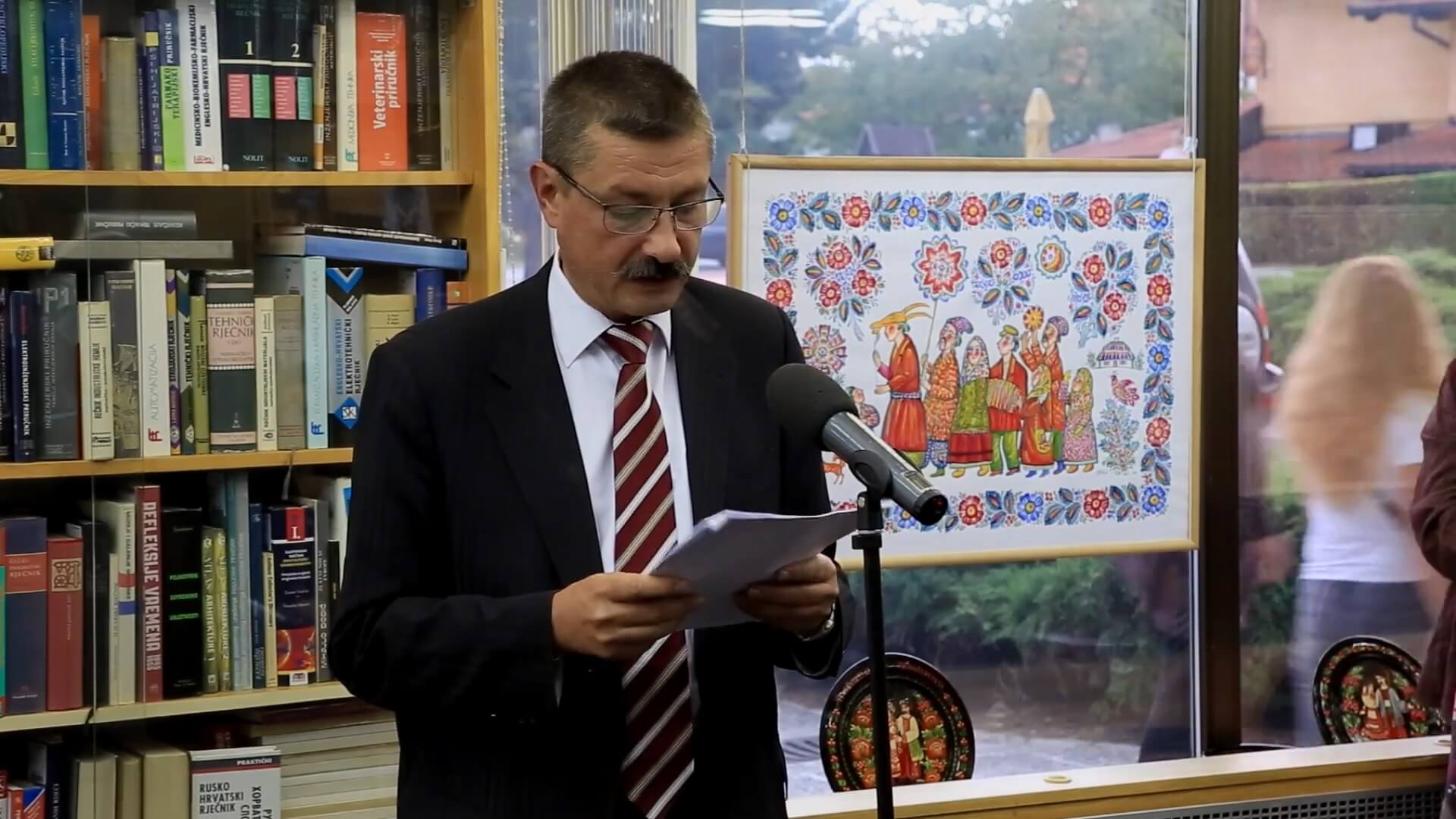
Jurij Lisenko reading his poetry at the exhibition opening of Ukrainian folklore "Petrikivski Rospis" in Samobor screenshot / Gradska knjižnica Samobor
Apart from that, the Lisenko family was very active and beloved on the Croatian poetry scene, and apart from presenting Ukrainian culture in Croatia, Jurij also introduced Croatian writers to Ukrainians.
The best instance of that is the Ukrainian translation of Croatian slam poet and writer Žarko Jovanovski and his short story collection „Tales of Lenin and Stalin“.
In addition, the good cooperation of the Ukrainian and Croatian writers is evident in an international literary magazine, Alternator, published by Sisak's Association For Alternative Culture, where Lisenko is a member of the editorial staff.
And the relevance of Lisenko as a partner for promoting Croatian writers in Ukraine was perhaps best described by the head of Edicije Božičević publishing house, Josip Ivanović.
„For a number of years, I knew a poet, diplomat, and genius Jurij Lisenko who I deeply respect. He is known in Ukraine more or less as an Avant Gard poet. And he published his book a long time ago. We walked around Lviv, and when there is a Lviv Book Fair, there are quite a lot of people and the atmosphere is as on a festival. Students approached him asking him to sign a book that he, as a poet, published 20 or 30 years ago. I never saw anything like that in Zagreb“, recalled Ivanović for Podcast Sekstant.
This shows not only that Ukrainians in general respect literature more than Croatians, but it is evident Lisenko is quite the rock star on the scene.
„I was very happy to see on Total Croatia a text on possibilities of foreigners in Croatia and that it was translated to 16 or 15 languages, including Ukrainian. I was very pleased with that. This means that connections between Ukraine and Croatia are significantly stronger. Indeed, in the last 10-15 years, Croatia became a favorite holiday spot for Ukrainians“, commented Lisenko.
Ukraine and Croatia – similar and friendly
With some differences between the Soviet Union and Yugoslavian communist practices, both Croatia and Ukraine share the same history of denied independence under a multi-national regime.
Đuro vidmarović, Croatian writer and former diplomat, told Laudato TV how the first Croatian president Franjo Tuđman appointed him as a Croatian Ambassador to Ukraine and how he was afraid as he wasn't sure what will await him there. But in the end, Ukraine for Vidmarović became a great topic and a happy period of his life. 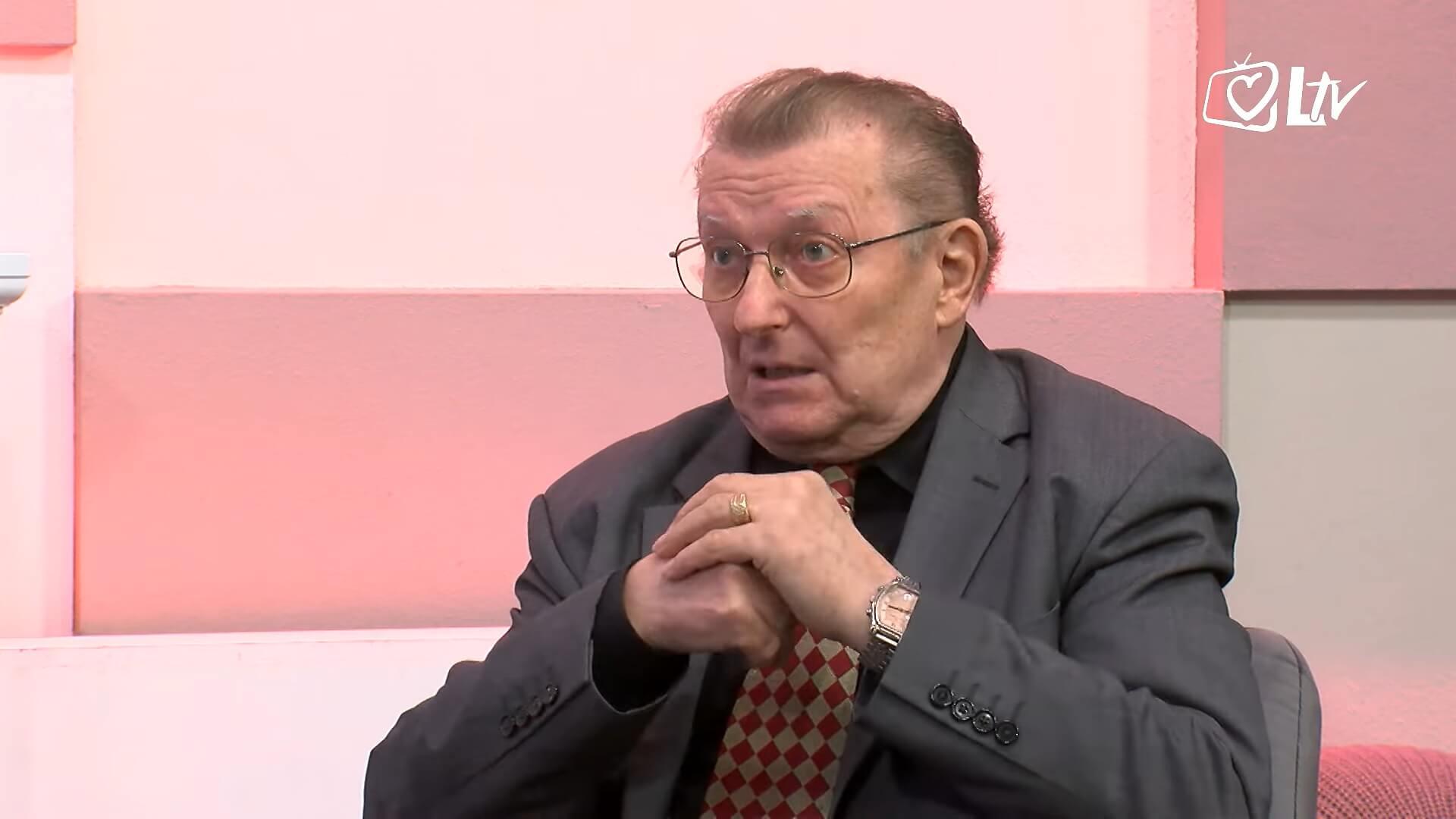
Former Croatian ambassador in Ukraine and writer Đuro Vidmarović, screenshot / LaudatoTV
„After I very quickly learned Ukrainian, a big area of Ukrainian culture and heritage opened up to me“, said Vidmarović adding that he met a lot of good colleagues there, particularly writers. As it was his mission to present Croatia, he also learned a lot and remained fascinated with the country of his mission.
„Ukraine is big, huge, contradictory, magical, unique, with a culture that makes it impossible for someone to stay indifferent. You come to Kyiv, and you see the Saint Sophia Cathedral from the 12th century with beautiful frescoes and architecture. My god, someone had to build it, had a sense for it. It was a civilization stronger from the majority of European countries at the time“, said Vidmarović for Laudato TV mesmerized with Ukraine he researches even to this day.
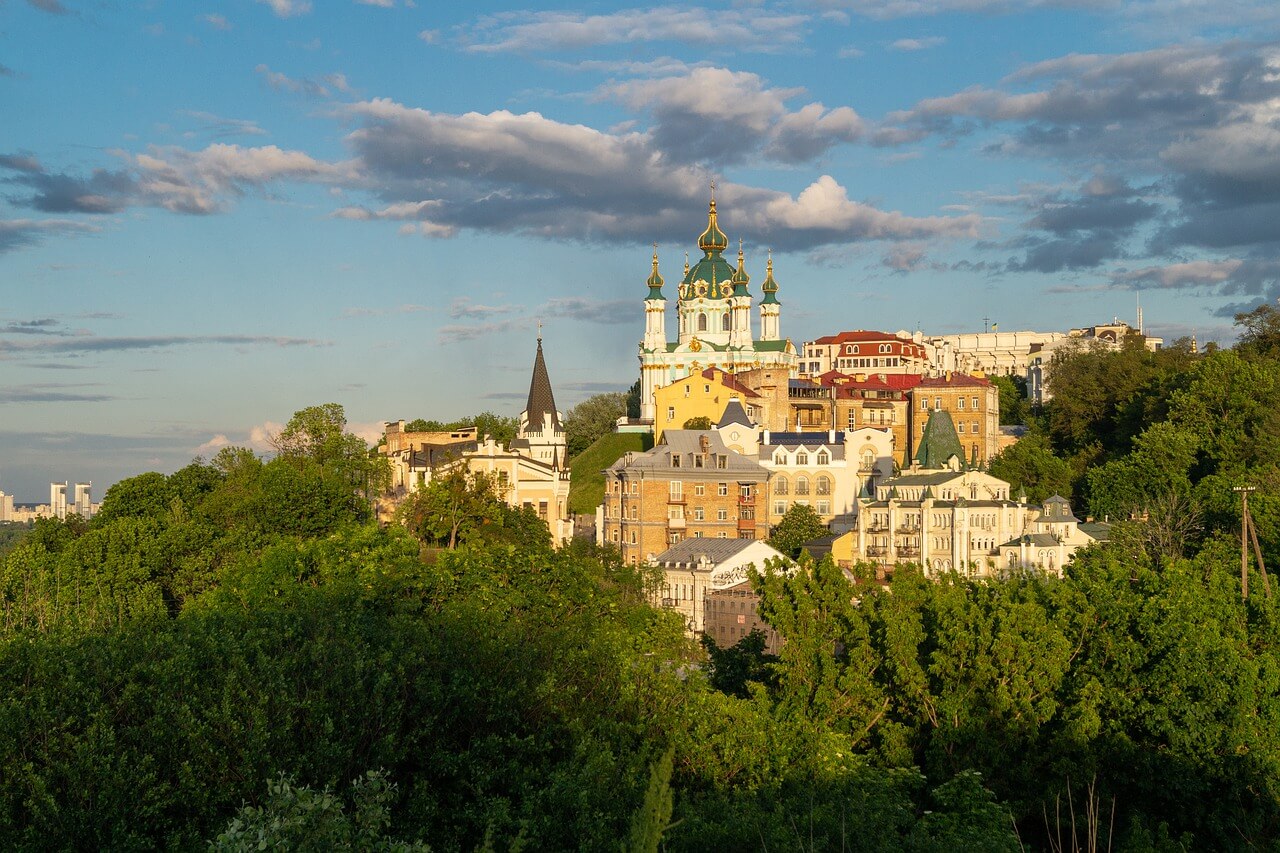
Breath-taking view of Kyiv © Pixabay
As Lisenko acknowledged, Croatia is also very famous in Ukraine too.
„Ukrainians discovered Croatia for themselves. Croatia is a beautiful country. You know that for yourselves. But, for Ukrainians, it is particularly pleasant in Croatia that they don't feel like strangers. But, for Ukrainians is a particular joy that languages are similar and Ukrainians, after several days, start to orient themselves in the language, to understand a bit, and can communicate with Croatians in cafes, restaurants, shops, streets, anywhere“, explained Lisenko for TCN.
He added that a lot of Ukrainians also come to Croatia searching for a job. While this may not be the best thing from the perspective of the Ukrainian economy (same as Croatians leaving Croatia isn't great for Croatian economic interests), Lisenko recognizes that the trend „also brings our two nations close“.
Discover Croatia in your native language
Apart from the article Lisenko commented on, Життя в Хорватії 2021: Витрати, дозволи, стиль життя та зустрічі з людьми, Ukrainians can also follow latest reports on COVID-19 in Croatia as well as 10 речей, які роблять Хорватію найкращою країною (or for English audience, 10 Things Croatia Does Better than Anywhere Else).
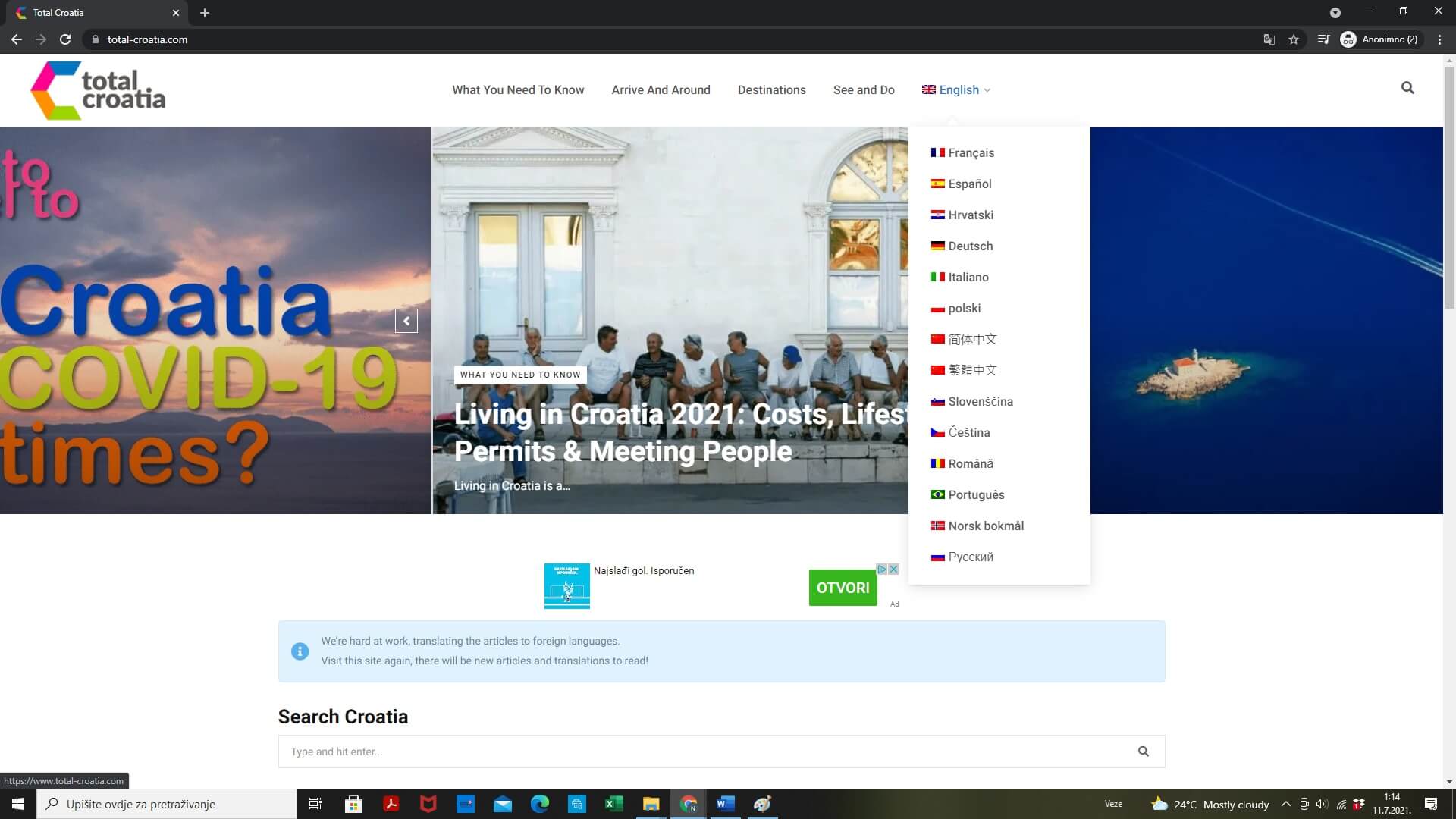
View of Total Croatia site and languages
So far, only these three articles are available in Ukrainian, but no doubt the future will bring more to make Croatia more accessible to beloved Ukrainian visitors.
Currently, TC counts 15 languages with the most translated content from English: Croatian, French, Spanish, German, Italian, Polish, Chinese (both traditional „zh-Hant“ and simplified "zh-Hans"), Slovenian, Czech, Romanian, Portuguese (Brazilian), Norwegian (Bokmål), and Russian.
If you want to learn more about diplomatic relations of Croatia, and everything regarding diplomacy and Croatia, check out TCN's series "Friends of Croatia" by Ivor Kruljac.
For more about Ukraine in Croatia, follow TCN's dedicated page.
Ivo Pilar Social Research Institute Expanding Scientific Cooperation in Sarajevo (BiH)
July 2, 2021 - Dedication to researching and developing the field of social sciences sees the Ivo Pilar Social Research Institute expanding scientific cooperation once again after Željko Holjevac's visit to Sarajevo, in Bosnia and Herzegovina.
The Ivo Pilar Social Research Institute, active as always, continues to expand its cooperation on scientifically explain social issues (symbolically noted as 2021 marks 30 years of the Institute).
As reported on their official website, Institute headmaster dr. Željko Holjevac visited Sarajevo, the capital city of the neighboring Bosnia and Herzegovina, from June 21-23.
The main story of that visit was a signed bilateral cooperation agreement between the Ivo Pilar Social Research Institute and the Sarajevo Catholic Faculty. The agreement was signed by Holjevac and Faculty dean dr. Darko Tomašević.
Additionally, Holjevac was at the reception with Vrhbosanski's vice bishop Vinko Puljić.
„They talked about possible shared projects that would be adjusted to the tradition, culture and developing needs of Croats in Bosnia and Herzegovina“, informed Ivo pilar social research Institute.
Croatian Cultural Society Napredak (progress) also met with Holjevac. Napredak soon celebrates 120 years of work and was founded at the start of the 20th century when the famous Croatian social scientist Pilar was active in Bosnia and Herzegovina. Napredak plans various manifestations for their big anniversary, and dr. Holjevac discussed the possible cooperation in organizing an international scientific symposium regarding the identity of Croats in Bosnia and Herzegovina.
Ivo Pilar Institute working in full speed
This sort of cooperation in regards to researching the Croatian diaspora in the neighboring country where the Croatian historical role and present is significant is nothing new for the Ivo Pilar Social research Institute.
As TCN reported earlier in May, the Institute, along with scientific partners, organized a conference “Identity of Boka Kotorska Croatians“, and the three-day event gathered crucial scientific institutes in Croatia to the town of Tivat in the Bay of Croatian Saints in Montenegro.
Scientists from the Institute were also active this year as they participated at European Conference For Social Work Research (ECSWR), International Society for Ethnology and Folklore (SIEF) Conference, and also by presenting a book on Croatian Mountain Rescue Service in Gospić, or by presenting book Cultural Identity of Vukovar – Contribution to Investigating Heritage and Successors“ – to list some of the activities TCN reported on throughout 2021.
As 2021 marks the 30th year anniversary of the Ivo Pilar Institute, apart from the aforementioned actions (to which we can include nurturing relations with scientific colleagues in Slovakia or opening a new research office on Vis Island), several more goals were envisioned by the end of the year: to publish the first edition of critical translation for the book „South Slavic (Yugoslav) Question“ by Ivo Pilar from 1918, and to make and publish Pilar's Kaleidoskop of Croatian society.
With the active academic dynamic demonstrated by the Institute, there is no doubt there is enough quality and capacity to achieve these goals. It is only a matter of time in such a busy and productive schedule.
Learn more about Croatian Diaspora on our TC page.
For more about science in Croatia, follow TCN's dedicated page.


